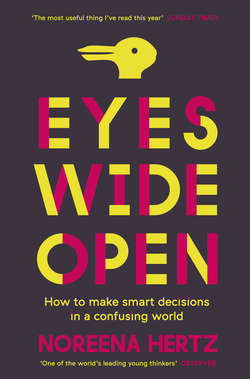Читать книгу Eyes Wide Open: How to Make Smart Decisions in a Confusing World - Noreena Hertz - Страница 15
STEP TWO See the Tiger and the Snake The Tiger and the Snake
ОглавлениеIn 2005, the prominent American cognitive psychologist Professor Richard Nisbett began an extraordinary experiment.
After some careful planning, he showed a group of American students and a group of Chinese students a set of images for just three seconds each. The images were pretty varied: a plane in the sky, a tiger in a forest, a car on the road – you get the idea.
How would the American and Chinese students view these images, the Professor wondered. Would they see them differently? Would they see the same things? If there was a snake on the ground, say, would the Americans or the Chinese notice it?1
The Professor’s methods were clinical. Upon entering the room, the students were placed in a chair, with their chins in a chin rest at a distance of precisely 52.8cm from the screen. They were then strapped in to 120Hz head-mounted eye-movement trackers. Nisbett could track every squint, glance or flicker of attention.
The differences between the two sets of students were immediately apparent.
The Americans focused on the focal object: the plane, the tiger, the car. They pretty much fixated on these, and barely looked at the background.
The Chinese, on the other hand, took longer to focus on the focal object – 118 milliseconds longer. And once they had done that, their eyes continued to dart around the image. They took in the sand, the sunlight, the mountains, the clouds, the leaves.
So if there was a snake on the ground behind the tiger, it would be the Chinese, not the Americans, who would see it.
